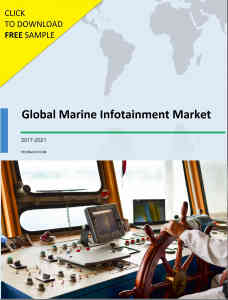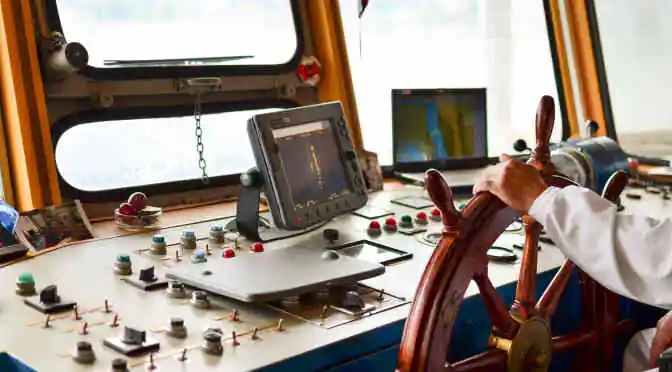After finding success in the automotive industry, infotainment systems have made inroads into marine vehicles. The marine infotainment market is one of the most proactively growing spaces, thanks to the increasing demand for cruise tourism and cargo ship activity. While the market does seem promising, there are three pressing challenges that will have to be addressed in order for the vendors to reap maximum profits from this dynamic sector.
Top 3 challenges floundering the marine infotainment market
1) Complications involved in integration
Several pieces of equipment, subsystems, and devices, need to be integrated in order to perform a specific function. Often, the functions performed by these systems and subsystems are provided by vendors who specialize in that area. Thus, the chances of disparity in standards of their performance are very high. And, here creeps in the one major challenge which stakeholders have been working to address. Integration of these subsystems is a rather tricky procedure, especially in the case of retro-fitment or replacement of a single component within the network of systems. These replacement procedures become a time-consuming process and affect the overall functioning of the system. Such instances have, sometimes, destroyed the functionality of the existing components and subsystems or have completely broken down the entire network of infotainment systems, resulting in additional expenses.
 At present, there are vendors who manufacture products and services that fulfil the role of a fully stocked infotainment system. However, a perceptible lag still exists between the products manufactured by a generalist and those manufactured by a specialist product manufacturer.
At present, there are vendors who manufacture products and services that fulfil the role of a fully stocked infotainment system. However, a perceptible lag still exists between the products manufactured by a generalist and those manufactured by a specialist product manufacturer.
2) Snags with on-voyage installation
Snags with on-voyage is yet another major challenge which stakeholders are trying to negate. An on-duty vessel or cruise is mostly away from land for weeks or months, which means any repair needs to be attended to at sea. Now, not only are there cases wherein snags cannot be repaired at sea, but also the fact that repair work at sea itself is an expensive affair. The trouble caused to the passengers, and the negative effect on the brand image due to these snags are other issues which need to be taken into consideration.
3) Preference for personal infotainment devices
Smartphones have become so common these days. Most of these phones incorporate several features, such as audio players, video players, and cameras, into a single small hand-held device, thereby eliminating the need for individual devices. This in turn results in lesser demand for onboard infotainment systems as passengers have their own devices to keep them engaged over the course of their journey.
Summarizing, these are some major challenges for sure. But to assume that these challenges will spoil the growth prospects of the marine infotainment market at the global level will be a little far-fetched. Our market analysts, as part of a comprehensive research report, predict the market for marine infotainment to witness a double-digit growth in the next three years. According to them, the reason stakeholders can be positive about this industry are:
1) Emergence of innovative entertainment systems for the cruise
Innovative entertainment systems are quite in demand with rising interest in cruise tourism. Just three years back, the US-based Royal Caribbean Cruises took its first voyage with Germany-based Amptown Company’s innovative entertainment system installed on its cruise ship. This system sports high-speed Wi-Fi connectivity, online check-in, a robotic bar, radio frequency identification (RFID)-based passenger services, and an 80-inch floor-to-ceiling HD LED screen installed on the cabin wall that acts like a virtual balcony.
Thus, despite the popularity of personal devices, the all-encompassing effect created by innovative entertainment systems is quite unmatched, serving as a major trigger for the growth of this industry.
2) Advent of internet protocol infotainment systems
Internet has given rise to many integrated systems, of which marine integrated digital infotainment systems are gaining rapid popularity. Several OEMs of marine infotainment systems are offering IP-based devices such as IPTV, IP closed-circuit television (CCTV), and IP multimedia communication systems.
One of the best examples of internet protocol infotainment systems is Alphatron Marine’s Alphatainment IPTV cabin entertainment system. This system includes features like digital TV distribution, video-on-demand, (enforced) safety instruction videos, and Public Address and General Alarm (PAGA) interfacing and fire detection systems to mute the audio and display the escape routes under emergencies.
Such infotainment systems help in keeping the crew connected to the outside world with news and entertainment, as well as display staff notices or deliver training modules via video. This further explains why investing in marine infotainment systems is sure to reap profits in the future.
3) Technology sharing between aviation, marine, and car infotainment systems
Technological advancements have made it possible to develop common entertainment systems, with slight variations, which can be installed on platforms such as cars, ships, or aircrafts. Also, the development of just one kind of infotainment system has raised the technical skill set required to deliver infotainment systems for different platforms. Therefore, vendors are increasingly focusing on developing infotainment systems that can be seamlessly integrated into multiple platforms without many alterations.
Thus, it will be safe to conclude that even though the marine infotainment market must battle out certain challenges to stay strong in the business, its growth trajectory is on a positive track. All that is needed is an intelligent strategy to come up with systems that are easy to integrate and adopt.



